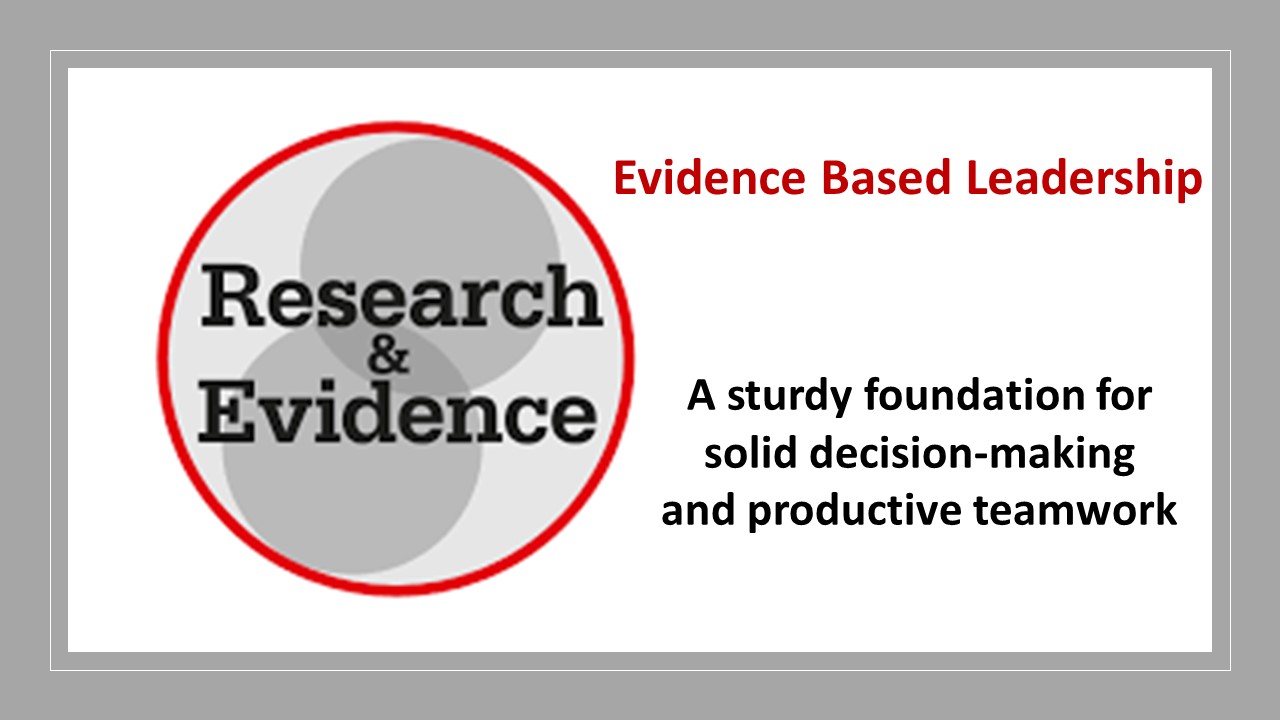By Thomas Davis CRNA, MAE, DNAP candidate
Follow @procrnatom on Twitter
Dr. David Sackett, an epidemiologist from McMaster University in Canada, is credited as being one of the early individuals most associated with evidence-based medicine. “Evidence based medicine,” in the words of Sackett, “is the conscientious, explicit and judicious use of current best evidence in making decisions about the care of individual patients.” The intent of using data to guide care is to move patient care beyond traditional lore and personal experience to a level of treatment based on solid evidence authenticated by research.
Building upon the success that evidence-based medicine created in healthcare, insightful business leaders are actively seeking ways to apply evidence-based management in the business community. Writing in the Harvard Business review, authors Jeffrey Pfeffer and Robert Sutton note the importance of gathering and using information to support leadership and management decisions. Their insightful article, Evidence based management, gives examples of business leaders, like GE and Adobe, gathering information in order to revise policies/procedures founded upon documented validation.
Examples of evidence-based management in the business community include GE and Adobe making the bold move to eliminate the dreaded annual performance review. Evidence revealed that APRs focused on the past, caused anxiety and impaired rather than improved performance. With the clear intention of building a collaborative culture, those same companies now require managers to have frequent one on one talks with employees instead of the APR. The new system requires managers to discuss ways in which workers can enhance their future performance. Inherent in the process is listening to employees suggest ways to improve the workflow and efficiency.
Communication, mutual understanding, respect, and ability to work together are four essential pillars that support highly effective workgroups. Gathering and using evidence to implement those essential items builds a foundation for solid management decisions. Managing a group of frontline healthcare workers is much different from directing a division at IBM, however the same principles apply. Taking the time to accrue information will position you as a solid thinker and will earn you the respect of your team and your chain of command.
Implementation of evidence-based management within your healthcare team is a 4-step process
- Ask questions. What are the policies and procedures that make the least sense to you or cause the most stress and anxiety in your team? Ask further, “Why do they exist, are they effective, and are they necessary?”
- Search for evidence. Review the literature, survey or interview other leaders, develop a questionnaire for your team and gather real information from every possible source. Often, similar management issues exist in the business community as in healthcare, and data is available online to guide your leadership decisions.
- Evaluate the data. Following the collection of information, set up a process to evaluate the data. A survey with interval and ratio data can be scrutinized with statistical analysis. Qualitative information collected by the interview process can be coded into themes that identify strengths and weaknesses of current policy.
- Act on the evidence. Develop a plan to implement the new data and roll it out with a pilot plan. Agree up front that the pilot is a trial that will be carefully assessed and modified before permanent changes are made to existing policy. Specify a period for the pilot and assess the results to determine if goals were met. Modify the plan to address deficiencies identified in the trial period and introduce the final version of the new policy for implementation by the entire team.
For example, a healthcare team was not satisfied with the results achieved by their current one size fits all bonus system where each person received the same amount of money regardless of productivity. Using the four-step process, the system was questioned, and team members agreed that the system was not fair, nor did it reward high achievers. Literature was reviewed and other leaders were questioned in the process of gathering information about alternative applications of bonus money. With fresh information in hand, a new plan was developed with defined metrics that when achieved, moved the person to a higher bonus level. Under the new system, everybody had the opportunity to receive the highest bonus, however benchmarks were required in order to earn the reward. Some on the team were driven by the money and others were driven by the status of achieving the upper tier. Regardless of the personal motivation, the productivity of the team soared under the new system. At the end of the first year, a committee of peers reviewed the process, updated the benchmarks for achieving the highest reward and rolled out the plan for year two.
Evidence-based thinking that is currently being applied in the business community emerged from the concept of evidence-based medicine and now has come full circle as it is being applied to healthcare management. The shift to data-driven decisions breaks the burden of being tied to tradition and opens the door for you to guide your performance and the dynamics within your team in new and insightful ways. Applying evidence makes healthcare leadership healthy.
Tom is a noted author, speaker, clinical anesthetist and is a strong advocate for nurses in leadership roles

